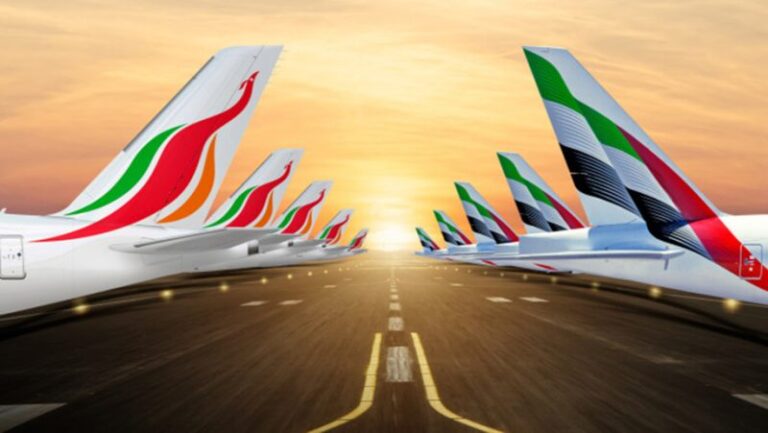A meeting of more than 100 countries on Friday agreed to an interim goal for emissions reductions from global aviation by 2030 by using less-polluting fuels, but China, Russia and some others aired concerns about the impact on their economies.
The goal, which came after five days of UN-led talks in Dubai, called for 5 per cent lower carbon emissions through the use of cleaner energies like sustainable aviation fuel (SAF) by 2030, the International Civil Aviation Organization (ICAO) said. An earlier draft had a target of 5-8 per cent.
The United States told the closing session of the meeting, which was held ahead of next week’s COP28 climate summit, that the goal sent a “clear and positive signal” to the financial community, which must invest in new clean energy projects.
Aviation industry emissions
Aviation accounts for an estimated 2-3 per cent of global carbon emissions. SAF is key toward reducing those emissions, but it is costly and amounts to less than 1 per cent of total global jet fuel.
Mauricio Ramirez Koppel, ICAO representative from Colombia, which is looking to produce SAF from materials like palm oil, said the 5 per cent target “will kick-start and speed up SAF projects” by providing investors a clear objective.
“Now it is up to the finance community and energy sector to support the necessary infrastructure and start delivering SAF in ever increasing quantities,” said Haldane Dodd, executive director of the Air Transport Action Group, which represents airframe and engine makers, among others.
Aviation is not directly covered by the Paris Agreement on combating climate change, but the air transport sector has previously pledged to align itself with global goals by setting an “aspirational” target of net zero emissions by 2050.
By bringing together broadly the same countries that are involved in COP28 , analysts have said that this week’s aviation talks offered an early glimpse of the scope for further cooperation.
The deal followed wrangling over wording, particularly the transfer of technology that African and other emerging economies want to allow them to ramp up SAF production capacity.
Not all countries agree to switch
Some countries made clear their reservations.
China, which has agreed to aim for carbon neutrality by 2060 rather than 2050, said the goal would “enormously increase” airline operating costs and discriminate against developing countries by posing a threat to energy and food security.
Saudi Arabia and Iraq, two major Middle East oil producers and OPEC members, objected to both the target and the date.
Environmentalists said agreement lacks teeth as it is not binding and would allow airlines to use lower-carbon fossil fuel.
“ICAO has no mandate to enforce this target so it will likely end up in smoke,” said Jo Dardenne, aviation director at the Brussels-based group Transport & Environment. “It is unclear how much and what type of fuels will need to be produced to reach this 5 per cent target globally.”
The aviation industry estimates it will take between $1.45tn and $3.2tn for SAF capital development to achieve the sector’s net zero emissions goal.
Making access to financing more readily available to developing countries, another conference goal, is needed to bolster SAF output outside regions like the U.S. and Europe.
Francis Mwangi, senior planning officer at Kenya’s Civil Aviation Authority, said his country needs financing to study the economic benefits of domestic SAF production and for using an old Mombasa-based refinery to produce the fuel.
“We are ready to move and produce SAF in Kenya,” Mwangi told Reuters ahead of the conference.



